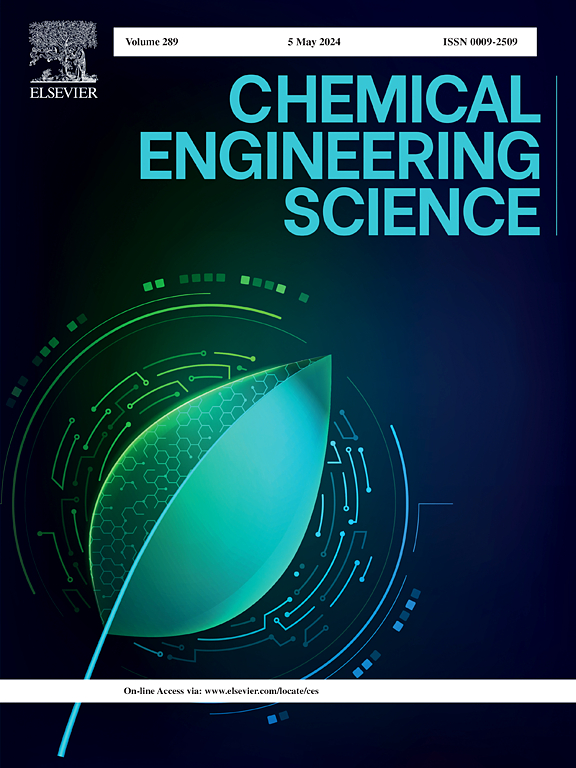MXene@Sb/In2S3异质结构协同合金化-转化-合金化复合反应机理提高Na+/K+存储性能
IF 4.1
2区 工程技术
Q2 ENGINEERING, CHEMICAL
引用次数: 0
摘要
锑基材料具有高容量和中等电势,是钠/钾离子电池极具前景的负极材料。然而,它们体积膨胀大,导电性差,导致结构稳定性低,反应动力学慢。本文首先采用Ti3AlC2块体材料的HF自由蚀刻策略制备了二维MXene纳米片作为支撑衬底。然后通过溶剂热法和随后的低温退火工艺合成了最终产物MXene@Sb/In2S3异质结构。MXene表面丰富的含氧基团为Sb3+/In3+的均匀锚定和Sb/In2S3纳米晶的生长提供了丰富的成核位点。此外,MXene@Sb/In2S3异质结构,在MXene表面上分散的Sb/In2S3纳米晶体,大大减轻了MXene纳米片的再堆积,从而使更多的活性位点暴露在电解质中。MXene@Sb/In2S3异质结构作为Na+/K+电池(SIBs /PIBs)的电极材料,具有优异的电化学性能和电池性能。在sib中,它在电流密度为1 a g−1 1000次时保持320mAh g−1的容量。在PIBs中,MXene@Sb/In2S3表现出与其他同类钾电材料相当的速率性能,并且在恒定电流为1 A g−1的情况下,在650次循环后保持了185mAh g−1的可逆容量。该设计策略为高性能合金基和转换型储能阳极的开发提供了有价值的指导。本文章由计算机程序翻译,如有差异,请以英文原文为准。
Synergetic alloying-conversion-alloying multiple reaction mechanism of MXene@Sb/In2S3 heterostructure for improved Na+/K+ storage
Antimony-based materials, which have high capacities and moderate potentials, are seen as promising anode candidates for sodium-/potassium- ion batteries. However, they suffer from huge volume expansion and poor conductivity, leading to low structural stability and slow reaction kinetics. In this manuscript, 2D MXene nanosheets was firstly prepared as the supported substrate through HF free etching strategy of Ti3AlC2 bulk material. Then the final product of MXene@Sb/In2S3 heterostructure was synthesized by solvothermal method and the subsequent low temperature annealing process. The abundant oxygen-containing groups on the surface of MXene provide abundant nucleation sites for the homogeneous anchoring Sb3+/In3+and growth of Sb/In2S3 nanocrystals. Furthermore, the MXene@Sb/In2S3 heterostructure, with dispersed Sb/In2S3 nanocrystals on the MXene surface, greatly mitigate MXene nanosheet restacking, thereby exposing more active sites to the electrolyte. When used as the electrode materials for Na+/K+ batteries (SIBs /PIBs), MXene@Sb/In2S3 heterostructure presents excellent electrochemical and battery performance. In SIBs, it holds the capacity of 320mAh g−1 at a current density of 1 A g−1 1000 cycles. In PIBs, MXene@Sb/In2S3 showed rate performance comparable to other reported potassium-electric materials of the same type and retained A reversible capacity of 185mAh g−1 after 650 cycles at a constant current of 1 A g−1. This design strategy provides a valuable guidance for the development of high-performance alloy-based and conversion-type anodes for energy storage devices.
求助全文
通过发布文献求助,成功后即可免费获取论文全文。
去求助
来源期刊

Chemical Engineering Science
工程技术-工程:化工
CiteScore
7.50
自引率
8.50%
发文量
1025
审稿时长
50 days
期刊介绍:
Chemical engineering enables the transformation of natural resources and energy into useful products for society. It draws on and applies natural sciences, mathematics and economics, and has developed fundamental engineering science that underpins the discipline.
Chemical Engineering Science (CES) has been publishing papers on the fundamentals of chemical engineering since 1951. CES is the platform where the most significant advances in the discipline have ever since been published. Chemical Engineering Science has accompanied and sustained chemical engineering through its development into the vibrant and broad scientific discipline it is today.
 求助内容:
求助内容: 应助结果提醒方式:
应助结果提醒方式:


